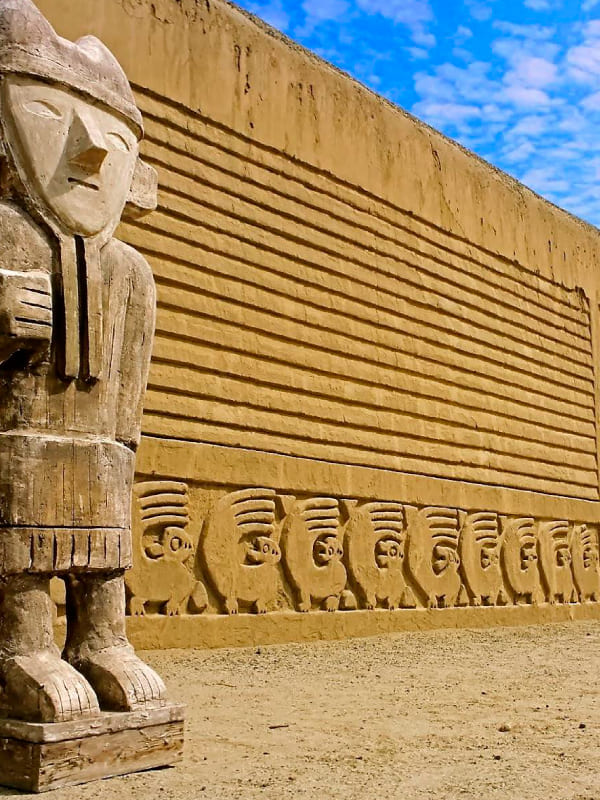Summary
Exploring the Ancient City of Chan Chan
Chan Chan, located in the Moche Valley of northern Peru, stands as a testament to the ingenuity of the Chimú civilization. It was the largest city of the pre-Columbian era in South America, and today it astonishes visitors with its grandeur. This archaeological site was once a vibrant center of politics, culture, and craftsmanship and held a population of approximately 30,000 people. Structures made from adobe clay, still visible, showcase the Chimú’s advanced engineering and artistic skills. Their complex network of canals for irrigation and innovative methods for conserving water in the arid environment are particularly noteworthy.
Get your dose of History via Email
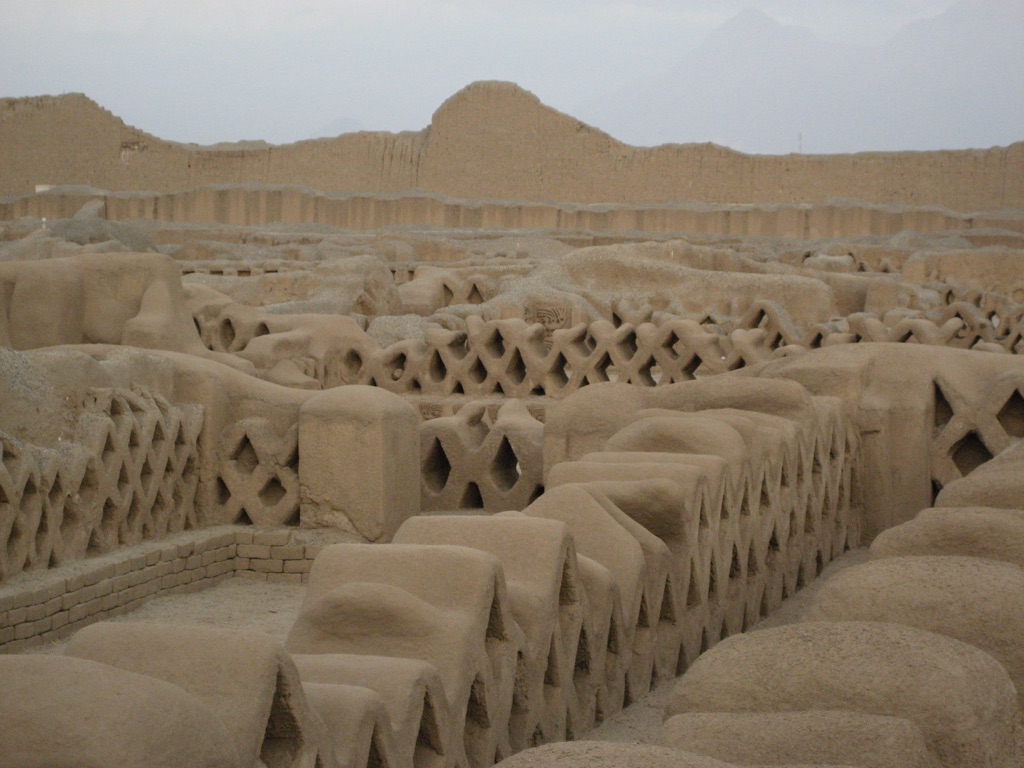
Chan Chan’s Architectural Marvels
The urban planning of the city reflects a remarkable level of social and political organization. The city is organized into nine ‘citadels’ or palaces forming independent units, each including ceremonial rooms, burial chambers, temples, and reservoirs. The walls of Chan Chan are adorned with intricate friezes depicting marine motifs, signifying the Chimú people’s connection to the sea. Conservation efforts are crucial as these features are under perpetual threat from environmental factors, particularly El Niño. Despite this, Chan Chan’s impressive architecture continues to draw historians and tourists alike, keen to unearth the mysteries of its past.
Cultural Significance and Heritage of Chan Chan
In 1986, it was designated as a UNESCO World Heritage site, affirming its significance as a cultural treasure. Visitors and researchers flock to the site, captivated by its extensive history and the stories held within its walls. The heritage also provides insight into the advanced social structure of the Chimú, their intricate artisan work, and the agricultural techniques that sustained a sophisticated civilization for hundreds of years. International collaboration and ongoing preservation efforts aim to protect this invaluable historical site for future generations to explore and learn from.
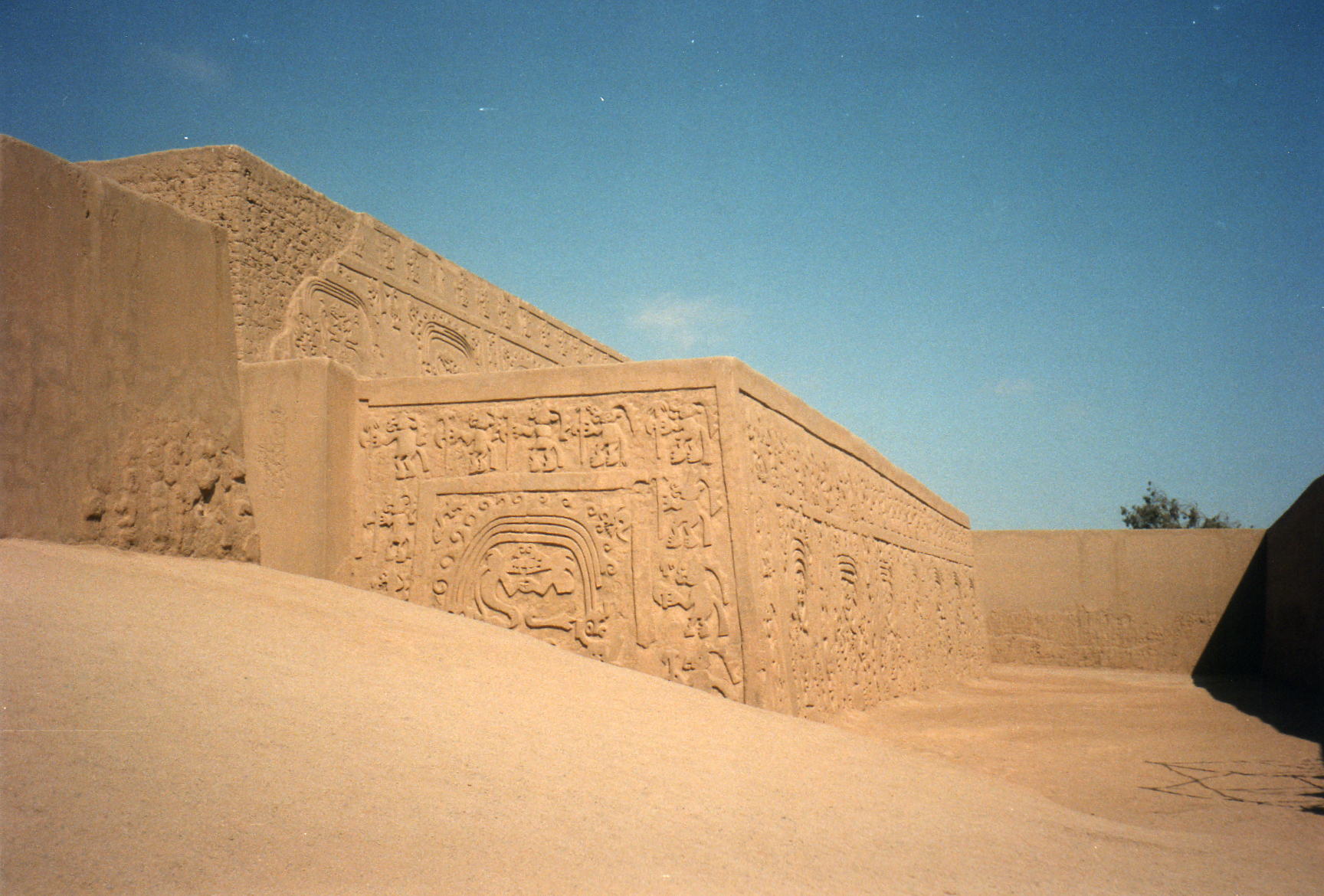
Historical Background of Chan Chan in Peru
The Rise of the Chimú Empire
As an emblem of the Chimú civilization, it thrived as the capital city from AD 900 to 1470. During its peak, it was the center of political and economic power in the region. The Chimú crafted a kingdom that stood out for its wealth, military might, and advanced societal structure. Their skills in irrigation and agriculture supported a burgeoning population, making it a hub for innovation and cultural evolution. By mastering their resources, the Chimú paved the way for a highly organized empire, long before the rise of the Incan rule that eventually absorbed them.
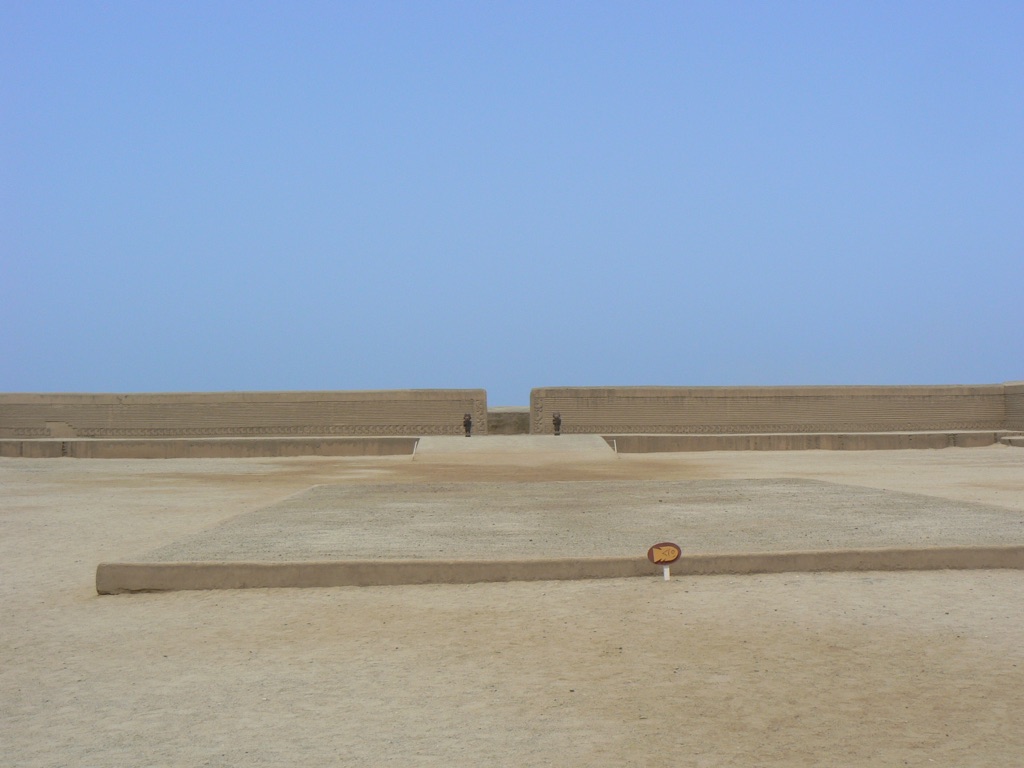
Architecture and Urban Design
Chan Chan’s urban layout was a marvel of the ancient world. It consisted of ten walled citadels, each a self-contained unit housing temples, living spaces, and storerooms. These fortresses symbolize the city’s high social order and sophisticated governance. The adobe structures, some still standing against time, are a testament to the remarkable skills of the Chimú architects. Vast squares, labyrinthine passages, and elevated platforms unravel the story of a civilization that lived in harmony with their environment and revered their deities through magnificent buildings.
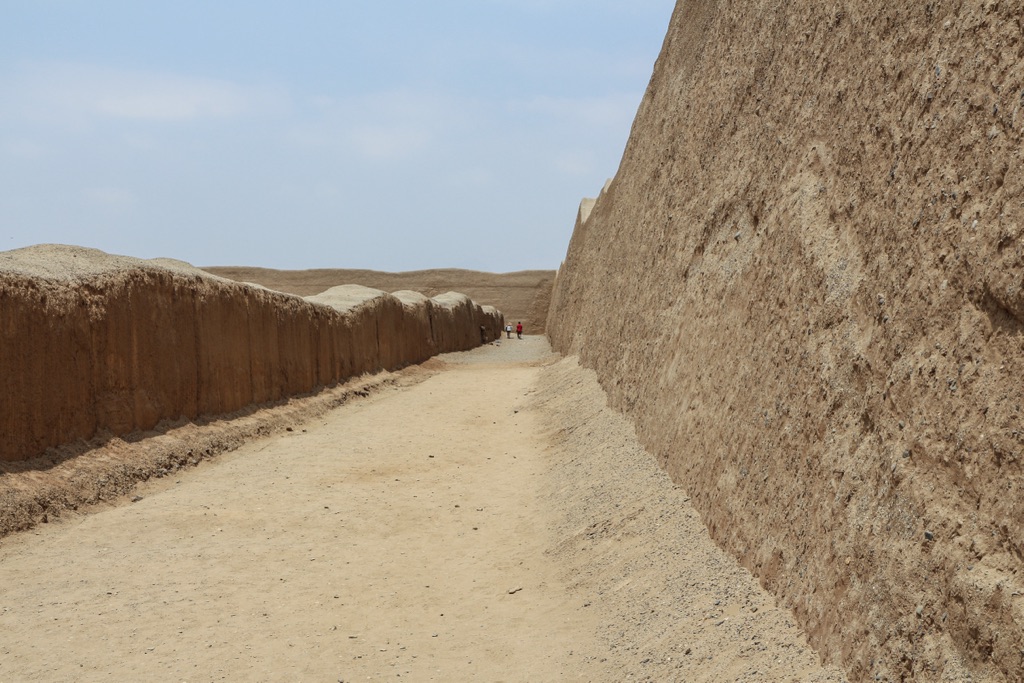
Artistic Expressions and Craftsmanship
Art was central to Chimú culture, with artisans held in high regard. Its intricate carvings and friezes reveal much about daily life, religious practices, and the natural world views of its people. Through their creations, we understand the significance of the sea and land, as marine and agricultural symbols reoccur in art across the city. Precise metalwork and elegant textiles offer a glimpse into the artisanal prowess that the Chimú used not only for aesthetic purposes but also for trade, helping to foster an economy that was diverse and far-reaching.
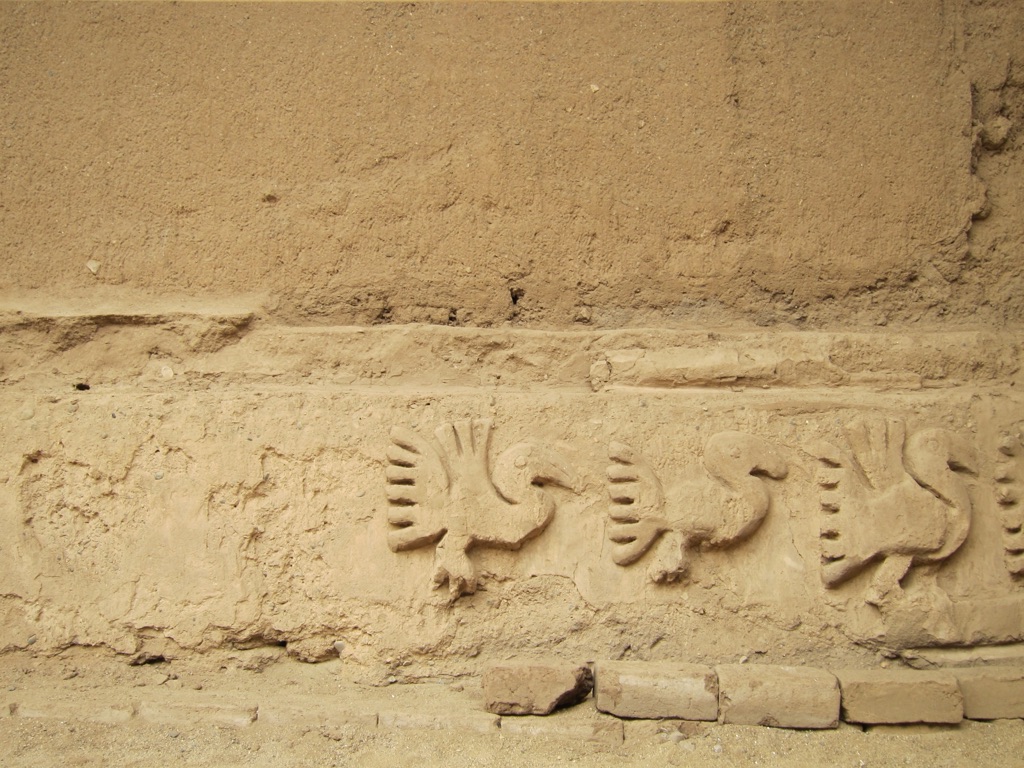
The intricate city layout and advanced architectural practices mirror the Chimú’s deep understanding of their environment. Moreover, their agricultural innovations played a substantial role in the sustenance and growth of their populace. Chan Chan’s extensive irrigation system, which diverted river water to the city, stands as an ancient engineering feat that supported expanses of fertile lands. These developed practices reflect a civilization ahead of its era in environmental adaptation, water management, and urban planning.
Today, the historical significance of this ancient place extends beyond its physical remnants. It provides invaluable insights into the pre-Columbian cultures of the Andean region. As a UNESCO World Heritage Site, it not only mirrors an ancient past but also brings lessons for the future. Acknowledging its vulnerable state due to natural erosion, efforts for conservation support an understanding of preserving human heritage. Chan Chan remains an open book from the past, offering endless stories to those who walk its ancient paths, compelling and rich with centuries of history.
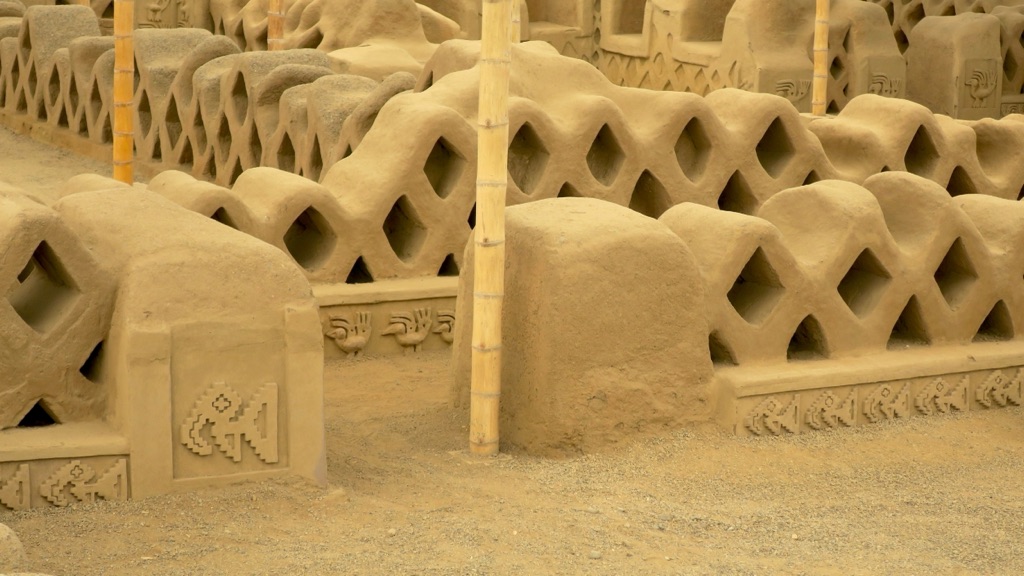
The Discovery of Chan Chan in Peru
Initial Unveiling
The ancient city was not truly discovered in modern times—it never lay completely hidden. The massive adobe city stood resilient through centuries, its ruins partially integrated with local habitats. It was an acknowledged presence by regional inhabitants well before global recognition; however, documented interest from the wider world in Chan Chan began to emerge in the 19th century. Eager historians and explorers started to record its extensive layout and extraordinary structures, marvelling at the work of the Chimú Empire.
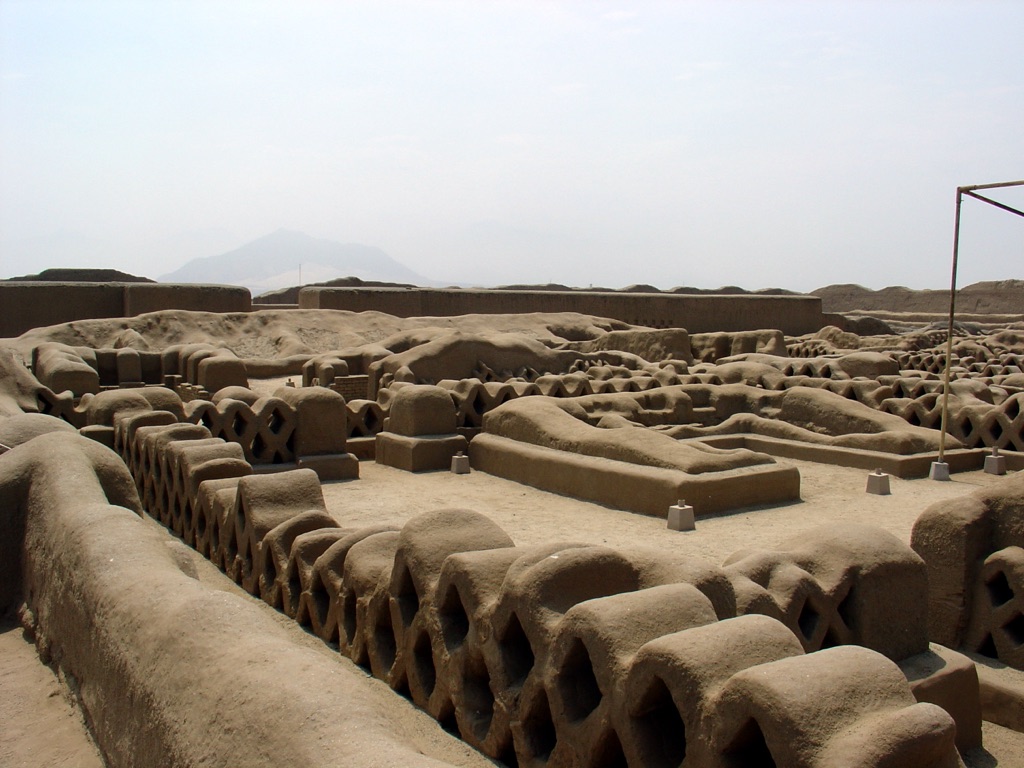
The Role of Researchers in Recognition
Renowned scholars such as John Rowe and Michael Moseley were pivotal in bringing this forgotten city into the academic light. During the mid to late 20th century, they and others conducted meticulous examinations of the site. Their studies laid a solid foundation for understanding the significance and extent of the ruin’s cultural impact. Their efforts brought Chan Chan to the forefront of important archaeological discussions globally, emphasizing the need for preservation and deeper exploration.
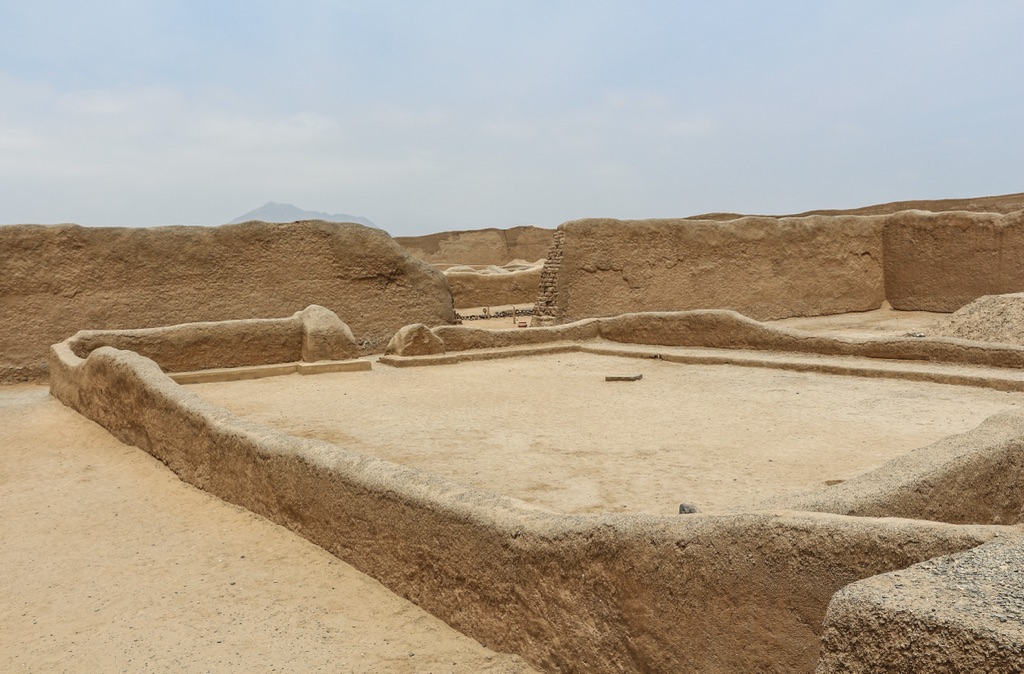
Chan Chan’s International Spotlight
In 1986, it was declared a UNESCO World Heritage Site, a move that spurred increased interest and ongoing research. This newfound status attracted teams of archaeologists, eager to delve into the city’s past. Together, they unravelled layers of history, each revealing more about the complex society that once bustled within its walls. This acknowledgement by UNESCO also highlighted the site’s vulnerability due to environmental threats, prompting a more focused conservation effort.
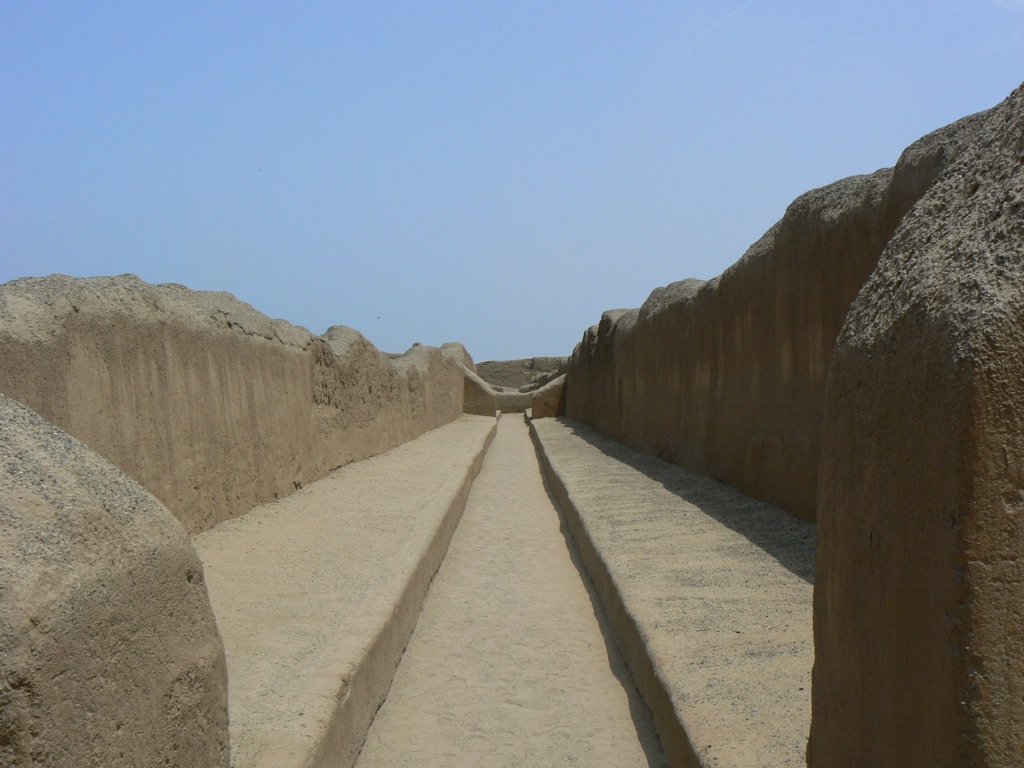
As the largest adobe city in the ancient Americas, Chan Chan’s discovery in terms of global appreciation came in waves. Erosion by wind and rain revealed different parts over time, enticing curious eyes. Local farmers and treasure hunters took note of the site’s value, passing knowledge through generations. This continuity ensured that the city remained in collective consciousness, bridging past and present with tales of its grandeur and sophistication.
Today, the work in uncovering the full extent of Chan Chan is ongoing. New technology enables archaeologists to unearth hidden paths, forgotten rooms, and buried secrets. With each excavation phase, the world learns more about the Chimú dynasty’s splendor. Scientists, historians, and cultural enthusiasts eagerly await each piece of the puzzle, knowing that its full story is integral to understanding Peru’s rich heritage.
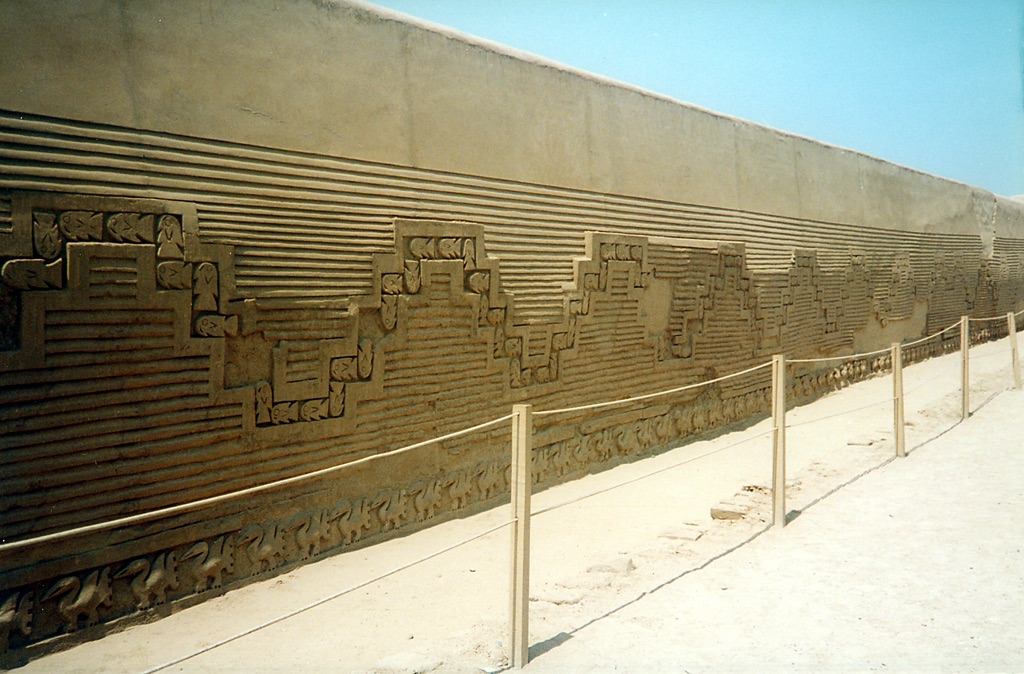
Cultural Significance, Dating Methods, Theories and Interpretations
The Heart of Chimú Civilization
Chan Chan’s importance as the epicenter of Chimú culture cannot be overstated. It functioned as a hub for social, political, and economic activities, fostering a bustling society rich in traditions and craftsmanship. The city’s architecture, with its intricate designs and expansive public spaces, speaks to a civilization that valued art, community, and stability. As such, it represents a significant chapter in Andean history, offering a window into the life and achievements of the Chimú people.
Radiocarbon Dating and Historical Timelines
The dating of Chan Chan has been primarily achieved through radiocarbon analysis. Organic material found within the ancient city’s layers has allowed researchers to place its prominence between the 9th and 15th centuries. These findings align with historical records and have helped scholars construct a timeline that charts the rise and fall of the Chimú dynasty, providing a clearer understanding of their development and interaction with other cultures, such as the Incas, who eventually conquered them.
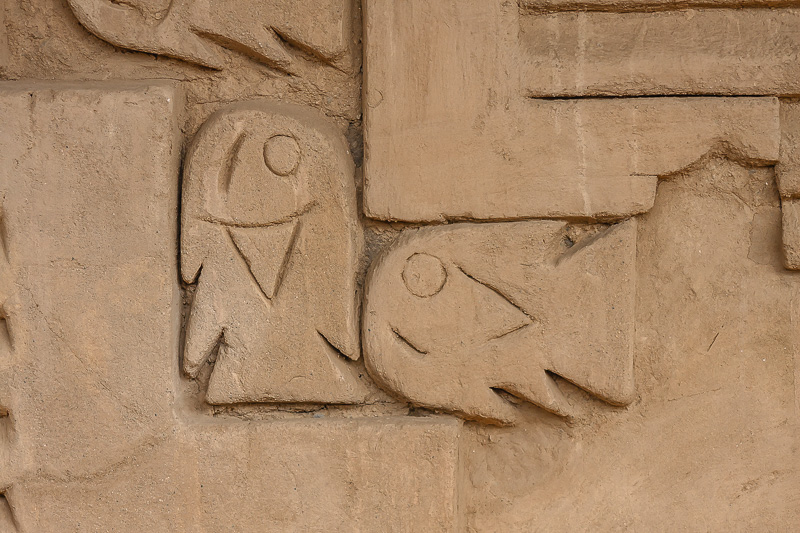
Unveiling the Past: Interpretations and Theories
Many theories circulate about the political structure and downfall of Chan Chan. Some suggest that its decline was due to ecological shifts, while others point to the aggressive expansion of the Inca Empire. Current theories emphasize the combination of both human and environmental factors in shaping the city’s fate. The interpretation of the city’s history remains a subject of ongoing debate, as new discoveries continue to offer fresh perspectives on the complexity of its society.
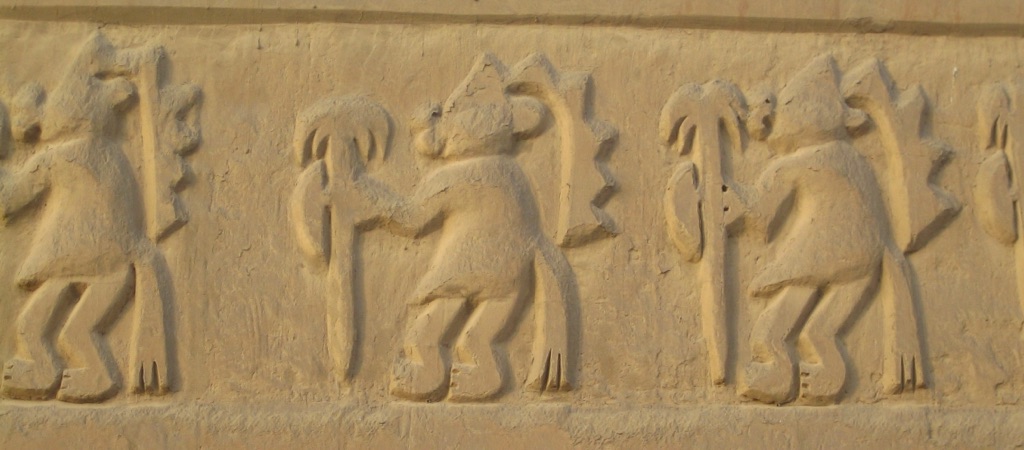
The art and iconography found throughout, are still under study for deeper meaning and significance. The pervasive marine themes hint at the importance of the ocean in Chimú mythology and economy. These creative works feed into broader discussions about the role of religion and mythology in the city’s daily life and governance, suggesting a people deeply connected to their natural surroundings and spiritual beliefs.
As the exploration continues, its cultural significance becomes more apparent, influencing how we view ancient American civilizations. International collaborations among historians, archaeologists, and indigenous groups work towards piecing together its complex narrative. In the process, they create a broader understanding of the Andean past and its impact on cultural development throughout the region.
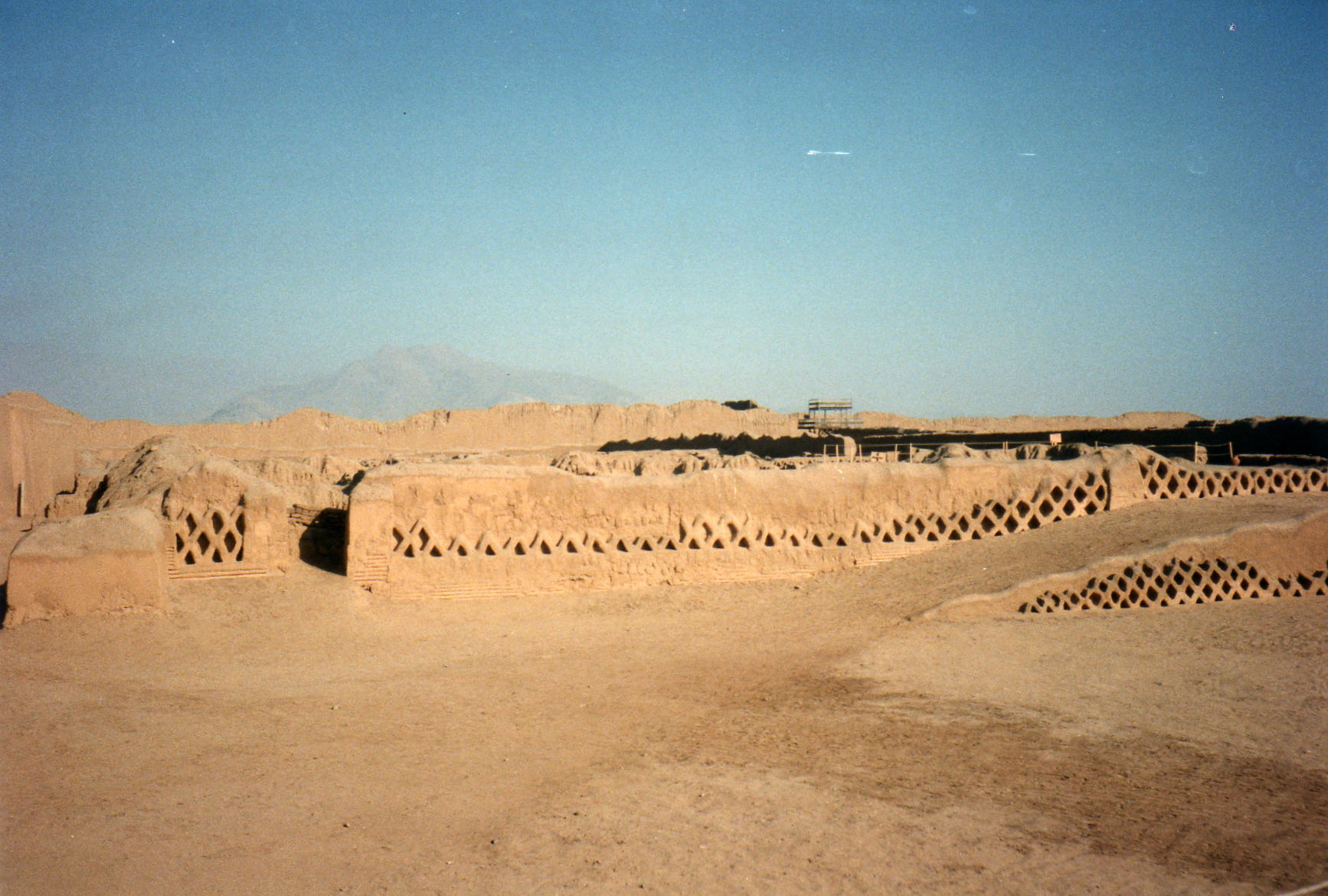
Conclusion and Sources
In sum, Chan Chan is a cultural and historical monument that offers invaluable insights into the Chimú civilization. Its discovery and ongoing excavations continue to shed light on ancient practices and beliefs that formed the bedrock of this society. As a UNESCO World Heritage Site, it is not only an archaeological treasure but also a symbol of cultural heritage that needs vigilant preservation. The significance of Chan Chan’s complex urban planning, its sophisticated water management systems, and its rich artistic expressions cannot be overstated. Together, these elements paint a picture of a once-thriving society that was remarkably advanced in its time. Ongoing research and interpretations stress the importance of protecting and understanding our ancestral past to inform contemporary cultural identity and historical knowledge.
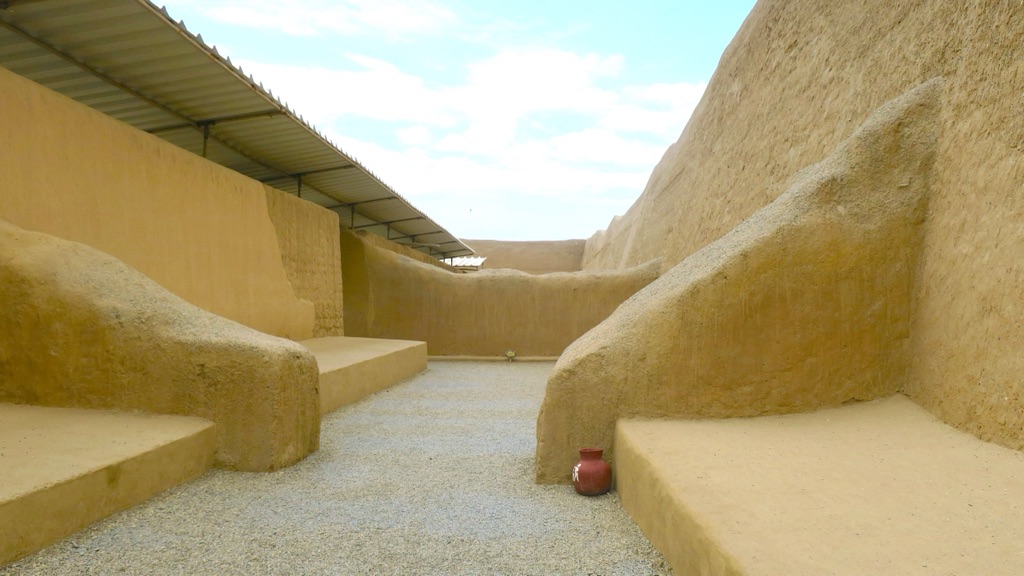
For further reading and to validate the information presented in this article, the following sources are recommended:
Or you can check any of these reputable archaeological and historical texts:
Keatinge, R.W. (ed.) (1988) ‘Peruvian Prehistory’, Cambridge University Press.
Moseley, M.E. (1992) ‘The Incas and their Ancestors: The Archaeology of Peru’, Thames & Hudson.
Topic, J.R., and Topic, T.L. (1987) ‘The Archaeological Investigation of Andean States: New Perspectives’, Annual Review of Anthropology, vol. 16, pp. 393-410.

